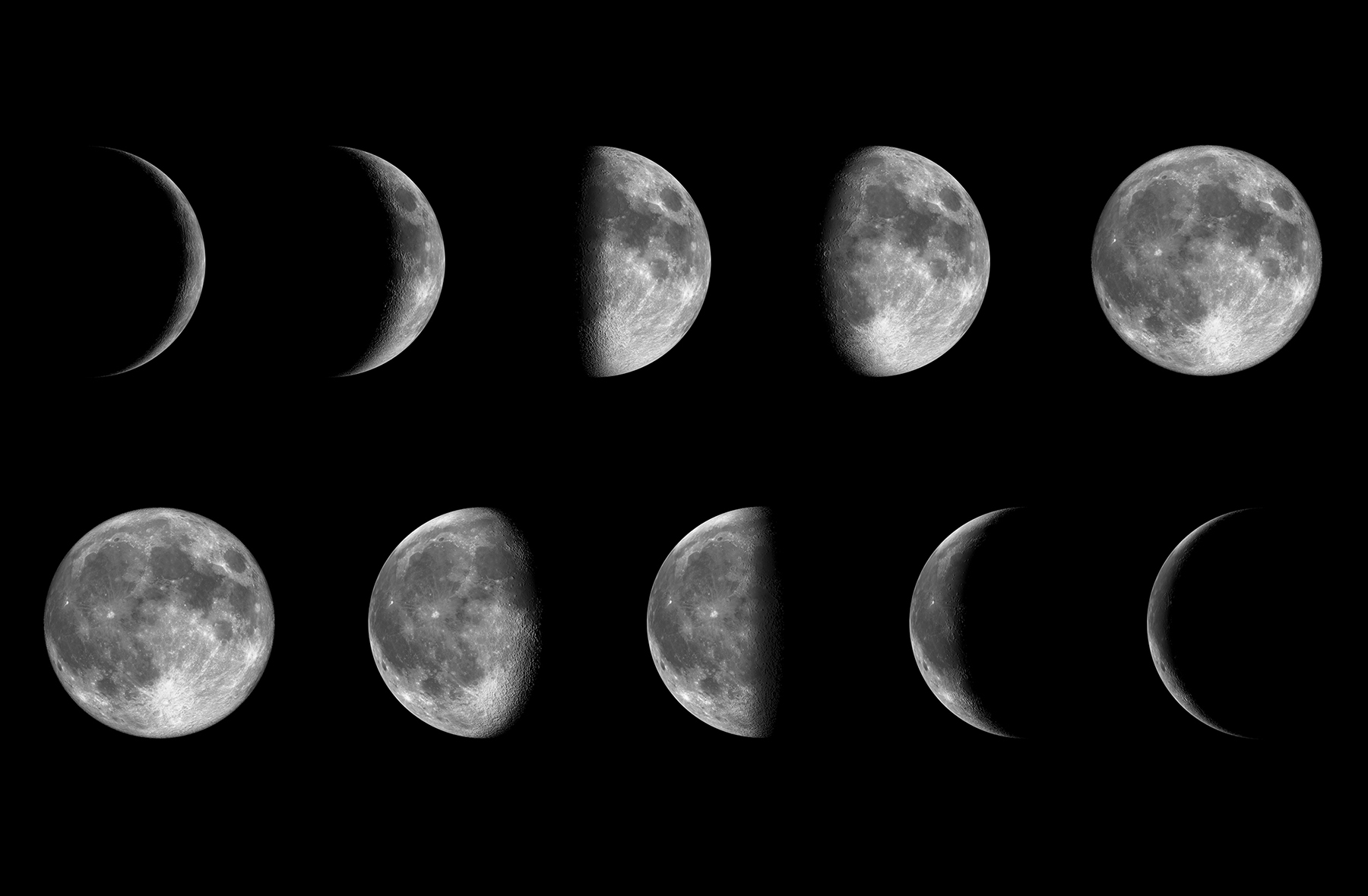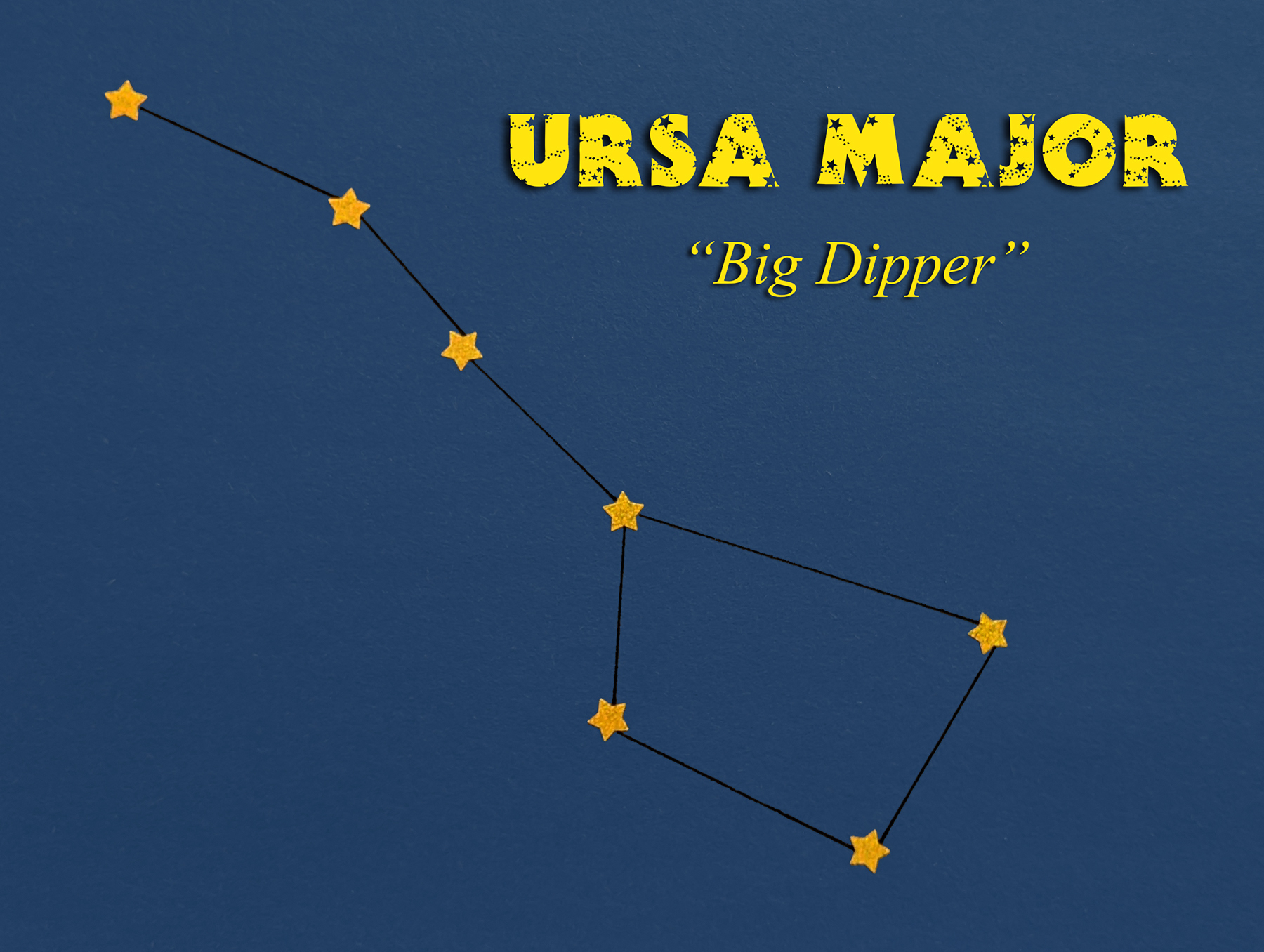
Warm summer nights are perfect for stargazing! Encourage little ones to explore the wonders of the night sky with fun, imaginative activities featured in our July blog post. We'll show you how to host a stargazing scavenger hunt, record the phases of the moon in a summer moon journal, and make beautiful constellations with a simple art project. Head outside on a clear summer night and try out these stellar astronomy activities!

Create a sense of adventure and wonder about the majestic nighttime sky with this scavenger hunt activity kids will love! A night sky scavenger hunt game is easy to put together, and you can turn the whole evening into a memorable experience the entire family will enjoy. The following ideas will help you prepare for a fun stargazing experience for everyone.
First, you will want to put together an "I Spy" scavenger hunt checklist. These are the celestial objects your little ones will be on the lookout for as they gaze up at the summer night skies. Your scavenger hunt checklist can vary in difficulty, depending on the age of the participants. You can create a very simple "I Spy" checklist for the littlest stargazers. For example, have them locate the moon and the brightest stars in the sky. Help them distinguish between stars and other objects in the sky like airplanes and satellites.
Older students may be given more challenging items on their scavenger hunt checklists. Consider having older kiddos look out for constellations that can be seen all year from the Northern Hemisphere, like Ursa Major (Big Dipper, Great Bear) and Ursa Minor (Little Dipper, Little Bear), including Polaris, the North Star. Also challenge them to find some constellations that only appear in the summer in the Northern Hemisphere, like Hercules and Lyra. Although a simple handwritten or typed stargazing checklist works well for this scavenger hunt activity, you will want to provide a picture of each constellation on the stargazing checklist to help kids find a replica in the night sky. (Note: You may find it helpful to try out a stargazing app on your phone to further aid your exploration of the night sky. Star Walk 2 and Sky View Lite may be good options to try. Just be sure kids have adequate opportunity to search the skies on their own before you use these GPS-based constellation finders.)
Depending on the month and time of night you go outside to stargaze, you may choose to hunt for more unusual celestial objects, like planets or even shooting stars! A quick online search will tell you which planets are observable in different months, what time of night they appear in the sky, and if they can be observed with the unaided eye. You can also check out the timings of annual meteor showers. The Perseid meteor shower, for example, occurs in mid-August and is one of the most prolific meteor showers in the Northern Hemisphere. Tailor your stargazing scavenger hunt to some truly spectacular viewings to make this activity one your kids will always remember.
Don't forget all the extras that make a night of stargazing fun! Toast marshmallows and make s'mores over a campfire as you wait for the first stars to appear in the night sky. Grab cozy blankets and hot chocolate to view the skies on cooler evenings. Or read stories from ancient mythology to discover how the constellations received their names.

Here's a simple activity that will help children understand the lunar cycle. Throughout the course of one full lunar cycle, students will observe the moon in the night sky and note the changes they see. You can use a journal or notebook for this activity. It's helpful if kids can use one blank page for each entry they make in their moon journal. Here's how to get started with this fun astronomy activity:
First, make sure your students are familiar with the moon phases that occur throughout the lunar cycle: New Moon; Waxing Crescent; First Quarter; Waxing Gibbous; Full Moon; Waning Gibbous; Last Quarter; Waning Crescent; and back to New Moon. You can use this printable moon phases chart as a handy reference. Next, choose a date to begin observing the phases of the moon. We recommend checking the lunar calendar and picking a night when the moon is in one of its more obvious phases, such as First Quarter or Full Moon.
Students will head outside in the early evening to observe the moon every night for one month. Along with the date and time of their observation, students will draw a picture of the moon as it appears in the sky each evening. They will include a label for the moon phase they observe that evening, if applicable. There will be evenings when the moon is not visible because it is in the New Moon phase or it is obscured by clouds. Students will note these observations in their moon journals.
Once students have observed a complete lunar cycle, they will look back on their moon journals to draw conclusions: About how long does the lunar cycle last? How many days in the average lunar cycle is the moon visible to the observer? What impacts the moon's visibility? What patterns can be observed about the progression of the moon's phases? Kids may be surprised about what they learn about the moon!

Kids can make their own beautiful constellations with a versatile art project inspired by the night sky! Little ones will choose a constellation—perhaps one they have observed firsthand on an evening of stargazing—to replicate as a creative piece of artwork.
You can use a variety of craft materials for this art project. Mini marshmallows and toothpicks; pipe cleaners and beads; push pins and string; even foil star stickers and markers will work great.
In our examples, we used star stickers and construction paper:



Here are a few helpful tips to make this art project a success:
Remember to tag @superteacherworksheets on social media so we can see your little learners' constellation masterpieces!
We hope these fun summer activities for exploring the starry night sky will inspire you and your kiddos to get outside and make lasting memories on these short-lived summer nights. There is so much beauty all around us—all we need to do is step outside and look up.
You may also like: